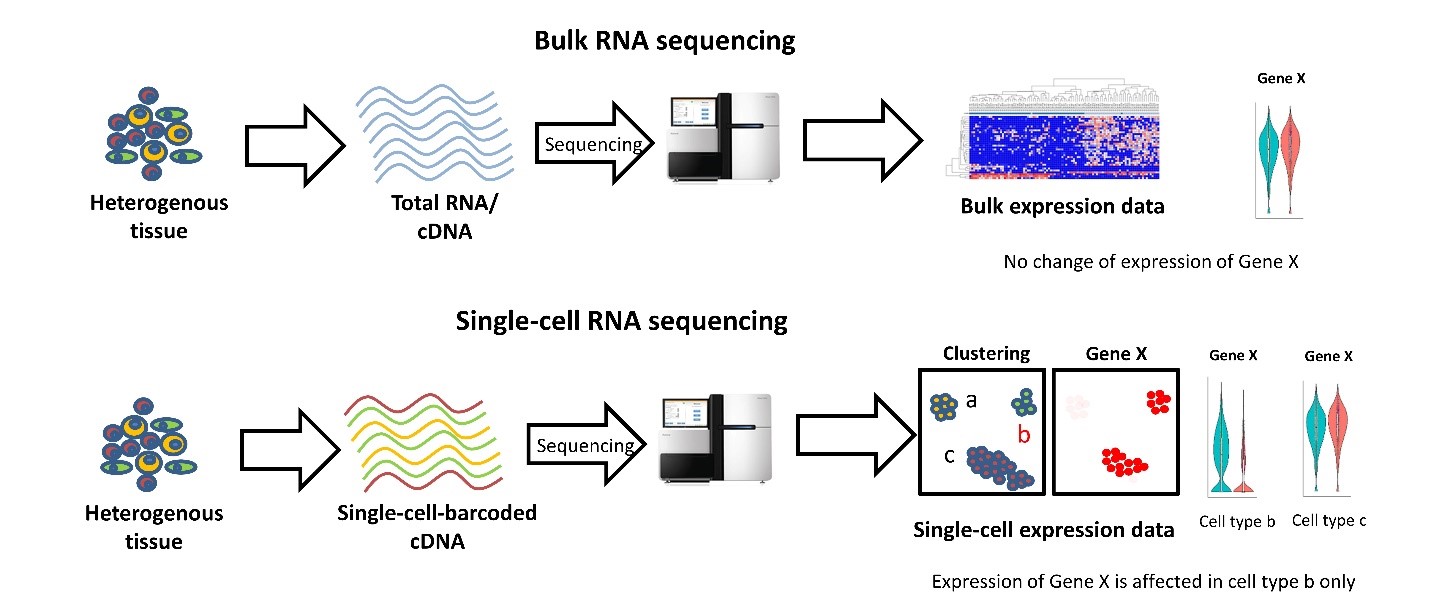
Expanding the Horizons of Genomic Research with ScalePlex Technology
In the rapidly evolving landscape of single-cell genomics, Scale Biosciences emerges with a groundbreaking solution – the ScalePlex technology. This innovative system aims to revolutionize how researchers conduct large-scale single-cell studies with unprecedented efficiency and precision.
Game-Changing Flexibility for Researchers
Scale Biosciences has introduced ScalePlex, a multiplexing technology that facilitates the seamless integration of multiple samples, enabling researchers to explore a wide range of experimental conditions. This flexibility is crucial for academic and clinical researchers who often deal with varying sample sizes and complexities in their investigations. The traditional barriers of single-cell multiplexing, such as extensive sample preparation and optimization, have been addressed, allowing for a direct approach in analyzing precious biological samples.
 Increased efficiency in genomics studies
Increased efficiency in genomics studies
Simplifying Complex Workflows
Traditional methodologies involving lipid- or antibody-based multiplexing can become cumbersome, especially when dealing with small biological tissue samples like those from cancer patients or neural tissues. ScalePlex overcomes these hurdles by using a modified oligo tag during the fixation process. This simplifies the workflow significantly, eliminating the need for individual fixation and washing of samples before pooling, thus preserving valuable samples and time.
As noted by Alexander Bick, M.D., Ph.D., from Vanderbilt University, “The scalability and efficiency of this technology makes it possible to study a much larger number of samples and cells than is realistic with other technologies.” This newfound capability opens avenues for deeper understanding of the genetic underpinnings of various diseases, paving the way for novel treatments.
Advancements in CRISPR and Drug Screening
Similarly, the ScalePlex technology aligns perfectly with the ongoing advancements in CRISPR-based studies and drug screening processes. As researchers look to optimize CRISPR screening methods, ScalePlex allows for conducting large-scale high-throughput screenings with single-cell resolution. This means researchers can now process and analyze numerous samples across varied conditions much more quickly and effectively.
 Accelerating drug discovery through innovative technologies
Accelerating drug discovery through innovative technologies
A New Era for Scientific Research
Giovanna Prout, President and CEO of ScaleBio, emphasizes the significance of this new technology, stating that “Our customers can expect this streamlined workflow to produce high-quality data whether they are studying as few as 12 samples or more than 300 conditions.” With leading pharmaceutical companies already expressing interest, ScalePlex is set to impact multiple research fields. This not only enhances the efficiency of the research process but also contributes to the overall advancement of biomedical science.
The Role of AI in Investment Analysis
In a parallel technological expansion, the wealth management sector is witnessing its own transformation through AI integration. Schroders Capital recently unveiled its proprietary platform, GAiiA, which stands for Generative AI Investment Analyst. This internal tool aims to supercharge private equity analysis through AI, offering swift data analysis capabilities and significantly reducing the time required for due diligence.
Harnessing AI for private equity analysis
Enhanced Investment Strategies
Building on previous AI endeavors, GAiiA automates the screening of vast datasets, allowing investment professionals more time for strategic decision-making. This shift towards automation is critical in today’s fast-paced investment landscape where timely and informed decisions are paramount. The ability to generate preliminary investment summaries at a fraction of the time could optimize investment strategies significantly.
By leveraging the expertise of both data scientists and investment professionals, Schroders Capital is positioning itself at the forefront of the wealth management sector’s evolution. The implications of these advancements are broad, suggesting a future where integrating AI into investment processes becomes the norm rather than the exception.
Innovations in Cochlear Implants: The UmboMic
Advancements in technology aren’t confined to genomics and finance; the medical field is also reaping the benefits. A recent development in the world of cochlear implants is the introduction of implantable microphones that could revolutionize auditory signal processing.
Current cochlear implants typically place microphones externally, which can limit sound detection capabilities. Researchers have now developed the UmboMic, a device designed to be implanted internally, providing better sound localization and filtering owing to its positioning within the ear. This miniaturized microphone utilizes piezoelectric materials to detect sound vibrations more effectively, thus enhancing the performance of cochlear implants.
 Innovative advancements in auditory technology
Innovative advancements in auditory technology
Overcoming Technical Challenges
Developed with careful engineering, the UmboMic will target the umbo—a part of the middle ear responsible for sound wave movement. The innovative design seeks to create a seamless integration between the auditory implant and the microphone, enhancing hearing capabilities dramatically. The potential for this technology to improve the quality of life for hearing-impaired individuals cannot be overstated.
Conclusion: A Future Full of Possibilities
As we stand on the precipice of a new age defined by innovation, technologies like ScalePlex and GAiiA are not just improvements—they represent a paradigm shift in how research and investment strategies can be approached. The event in the audiological field with the UmboMic further exemplifies the incredible potential for interdisciplinary advancements in technology. As these innovations continue to unfold, the promise of improved outcomes across scientific, medical, and economic sectors becomes ever more tangible.
The future looks promising as we embrace these revolutionary technologies that continue to push the boundaries of what’s possible in research and beyond.












